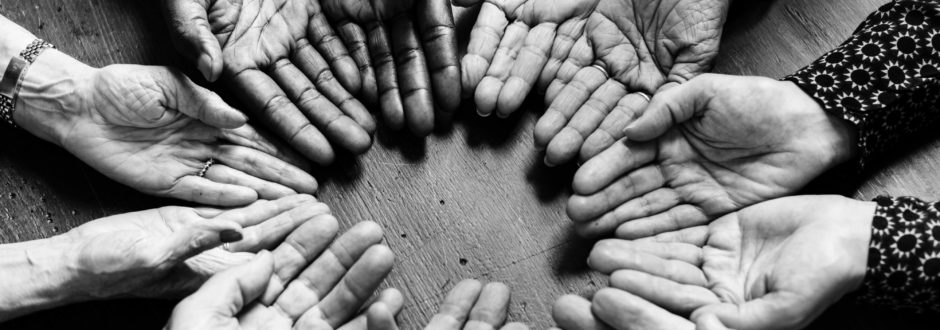Karen Armstrong, a former nun-turned-Oxford scholar, wrote in Twelve Steps to a Compassionate Life:
“All faiths insist that compassion is the test of true spirituality and that it brings us into relation with the transcendence we call God, Brahman, Nirvana, or Dao.”
Long considered a keystone of the world’s religions, compassion is frequently heralded as one of the most central tenets of the human experience; a virtue to be cultivated and nurtured; an answer to some of the world’s gravest ills.
For a word that gets tossed around generously in our socially conscious culture, however, its meaning can sometimes become lost; its significance diminished.
In Tattoos on the Heart: The Power of Boundless Compassion (2010), Jesuit priest Gregory Boyle (1954-present) provides a biblically based understanding of compassion that challenges our assumptions on what it truly means to practice it.
Founder of Homeboy Industries, an organization that provides employment training and support to former gang members, Father Boyle’s experience working in the ghetto makes him both a credible authority on compassion, and a reliable witness to its power.
Compassion is…
“Compassion is always, at its most authentic, about a shift from the cramped world of self-preoccupation into a more expansive place of fellowship, of true kinship.”
But what does that really mean?
“Compassion is no fleeting occasional emotion rising to the surface like eros or anger. It’s full-throttled. Scripture scholars connect the word to the entrails, to the bowels, from the deepest part of the person.This was how Jesus was moved, from the entirety of his being. He was ‘moved with pity’ when he saw folks who seemed like ‘sheep without a shepherd.’ He had room for everybody in his compassion.”
The best way to understand it is by drawing a distinction between being for someone and with someone:
“Jesus was not a man for others. He was one with others. Jesus didn’t seek the rights of lepers. He touched the leper even before he got around to curing him. He didn’t champion the cause of the outcast. He was the outcast. He didn’t fight for improved conditions for the prisoner. He simply said, ‘I was in prison.’”
In other words, compassion is not simply a moral positioning:
“The strategy of Jesus is not centered in taking the right stand on issues, but rather in standing in the right place – with the outcast and those relegated to the margins.”
This translation of the Beatitudes says it all:
“Scripture scholars contend that the original language of the Beatitudes should not be rendered as ‘Blessed are the single hearted’ or ‘Blessed are the peacemakers’ or ‘Blessed are those who struggle for justice.’ Greater precision in translation would say, ‘You’re in the right place if…you are single-hearted or work for peace.’ The Beatitudes is not a spirituality, after all. It’s a geography. It tells us where to stand.”
Furthermore, being with someone requires the recognition of a oneness with another:
“Often we strike the high moral distance that separates ‘us’ from ‘them,’ and yet it is God’s dream come true when we recognize that there exists no daylight between us. Serving others is good. It’s a start. But it’s just the hallway that leads to the Grand Ballroom.”
Consider the story of the healing of a paralytic man, which demonstrates the point well:
“In Scripture, Jesus is in a house so packed that no one can come through the door anymore. So the people open the roof and lower this paralytic down through it, so Jesus can heal him. The focus of the story is,understandably, the healing of the paralytic. But there is something more significant than that happening here. They’re ripping the roof off the place, and those outside are being let in.”
Or when it comes to the poor…
“Here is what we seek: a compassion that can stand in awe at what the poor have to carry rather than stand in judgment at how they carry it.”
Indeed, it’s not just about loving those we like or agree with:
“Jesus says if you love those who love you, big wow(which I believe is the original Greek). He doesn’t suggest that we cease to love those who love us when he nudges us to love our enemies. Nor does Jesus think the harder thing is the better thing. He knows it’s just the harder thing. But to love the enemy and to find some spaciousness for the victimizer,as well as the victim, resembles more the expansive compassion of God. That’s why you do it.”
Compassion is about dismantling barriers:
“Compassion isn’t just about feeling the pain of others; it’s about bringing them in toward yourself. If we love what God loves, then, in compassion, margins get erased. ‘Be compassionate as God is compassionate,’ means the dismantling of barriers that exclude.”
In conclusion:
“God is compassionate, loving kindness. All we’re asked to do is to be in the world who God is. Certainly Compassion was the wallpaper of Jesus’ soul, the contour of his heart, it was who he was.”
Tattoos on the Heart is a fun, engaging read in its entirety, inviting you into the lives and minds of an eclectic cast of characters.
Broken into a series of parables with different themes – compassion, kinship, redemption, etc. – it incorporates a gentle sense of humor that lifts the spirit while revealing the depth and power of true compassion.



